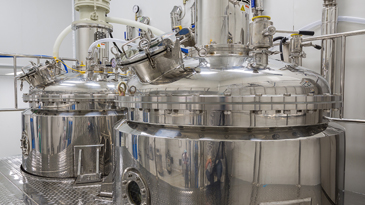The ability to monitor and analyze variables in a mineral recovery process to identify what’s critical to quality and take appropriate action to stay on-spec has long proven difficult. Deloitte states that predictive quality analytics can help ensure product quality, meet specifications and recognize safety risks. However, even with several data visualization and analysis techniques, it may still be a daunting challenge for most experienced engineers and analysts to sift through all the data patterns to identify the root cause of a problem and determine a relevant solution in a timeframe that ensures ongoing profitability.
Small variations can diminish mineral recovery. Without clearly understanding those exact variances, operators can’t easily forecast outcomes or effectively compensate to maximize yield. Optimal mineral recovery depends on adapting to variations in mining and processing. Numerous discrepancies can impact froth flotation efficiency and recovery. Particle-bubble contact and attachment, absorption and desorption all vary with changes in froth composition, environment, equipment and operators.
To ensure maximal recovery throughout the process, operators use additives or adjust supply feed rates and tip stirrer speeds. Existing industry equations help create grade-recovery curves which weigh the trade-off of producing a high-grade concentrate while maintaining as high a recovery rate as possible.
New Tools to Improve Quality and Consistency
Even with the correct formula of collectors, frothers, modifiers and feed rates, inconsistencies will make their way into the process through changes in operational procedure, environmental conditions, equipment degradation and slurry composition. Multivariate analytics such as Aspen ProMV™ can identify problems in quality and recommend corrective action in real-time.
If calculations reveal that the batch efficiency is deviating, ProMV provides diagnostics that quickly direct operating personnel to the root cause, enabling informed and timely corrective action. In addition, automated in-flight adjustments to key recipe decisions such as quantity and timing of an additive, temperature changes and stage duration can assist in flotation recovery improvements. Timely interventions steer outcomes consistently to higher yield, quality and throughput.
Optimal process adjustments at key points through the flotation and recovery evolution are the difference between recovery that stays on course and doesn’t drift off course. Multivariate analysis allows metallurgical engineers to find the real signals and separate them from the noise, examining the model findings in an intuitive way. With ProMV, redefinition of standard industry equations and descriptions of the effectiveness of flotation recovery as well as froth flotation processes can become a reality.
In the future, mines will be able to autonomously control all aspects of production. Advanced process control systems with multivariate analytics will be able to make in-flight adjustments to optimize recovery, allowing mines to further enhance operations to drive profit.
To learn more this advanced technology, take a look at the recent white paper Ensure Consistent Operations and Mineral Recovery with Machine Learning.






Leave A Comment